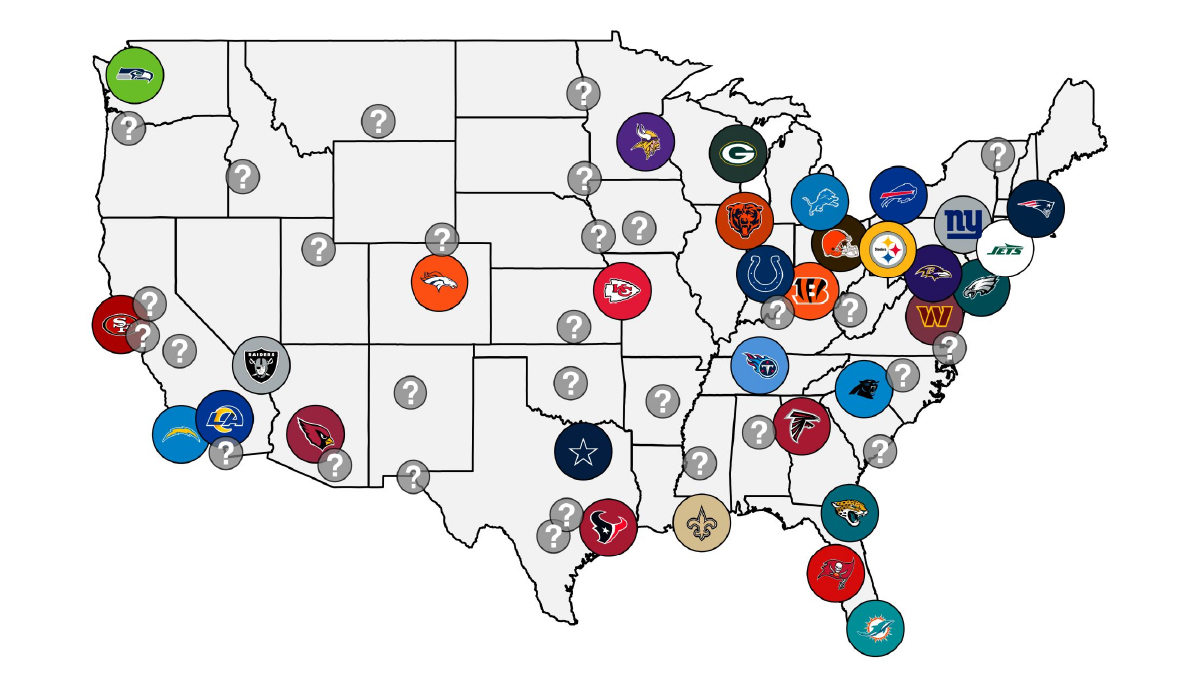Which U.S. Cities Deserve an NFL Team? Our Data Science Team Has Answers!
By Polco on February 6, 2025

With Super Bowl Sunday just days away, football fever is at an all-time high—so our data science team here at Polco decided to tackle (pun absolutely intended) a burning question: Which cities across the United States deserve an NFL team but don’t actually have one?
Under the leadership of our CTO, Alex Pedersen, our team of data aficionados analyzed a mountain of numbers to see which cities have the strongest potential to support a franchise. Note that we didn’t try to predict if these hypothetical teams would dominate on the field. It’s purely about fan support, local enthusiasm, stadium logistics, and the ability to create a lasting NFL culture.
How We Ranked the Cities
Unlike expansion proposals that focus on potential profits or market size alone, we took a holistic approach—because let’s be honest, the NFL isn’t always predictable.
Our analysis factored in:
🏈 Population dynamics – How big is the city, and is it growing?
🏈 Proximity to other teams – Would they have their own fanbase, or would they be competing with an existing team?
🏈 College football culture – Passionate college football fans often make for dedicated NFL supporters.
🏈 Income levels & economic strength – Can the city support an NFL team with ticket sales and sponsorships?
🏈 Other professional sports teams – Does the city already support major league franchises?
🏈 Drinking habits – Okay, this one was more for fun, but let’s be real—game day tailgating is a crucial part of football culture.
Honorable Mentions
Before we unveil the Top 10, we have to give credit where credit’s due. Our honorable mentions go to:
- San Diego, CA – Chargers fans can’t forget the glory days, but the city’s history with losing a franchise cost it points this time around.
- San Antonio, TX – A strong market overshadowed by Dallas and Houston, San Antonio has all the makings for a devoted fan base.
- Columbus, OH – Just a bit too close to other NFL teams (sorry, Cleveland!). But with that rabid Buckeye spirit, who’s to say Browns fans wouldn’t jump ship?

The Top 10 Cities That Should Have an NFL Team (But Don’t)
After sifting through an array of data points—population, income levels, sports culture, stadium feasibility, and more—we arrived at this list:
10. Birmingham, AL
9. Tulsa, OK
8. Portland, OR
7. Omaha, NE
6. Lincoln, NE
5. Louisville, KY
4. Oklahoma City, OK
3. Orlando, FL
2. St. Louis, MO
1. Austin, TX 🎉
Congratulations to Austin for snagging the top spot! With Texas already a football hotbed, Austin’s explosive growth makes it a prime contender for the NFL’s next big move. And we have to tip our hats to Nebraska and Oklahoma for each placing two of their cities on the list. We even toyed with the concept of “regional” teams (think New England Patriots) for areas like Omaha/Lincoln and Tulsa/OKC.
So what pushed Austin ahead of the pack? Population growth, demographic shifts, vibrant university athletics, and a proven appetite for sports all combined to create the perfect football storm. As for Nebraska—no professional sports teams, plus passionate college football fans who’d likely fill any stadium. And if Orlando can support Mickey Mouse, why not NFL Sundays?
Data Science in Action
This lighthearted study is just one of the many ways our data science team—which includes shoutouts to Michelle Kobayashi, Erin Caldwell, and Parker Quinn—can put their skills to work. Whether we’re analyzing community feedback for 450+ local governments or pondering football frontiers, our goal is the same: to leverage data to make informed, compelling insights.
Dreaming of a New Franchise?
If you find yourself drafting a team name and logo for the “Austin Musicians” or the “Southeast Nebraska Scarecrows,” you’re not alone. We’ve had a blast exploring this topic, and we hope our analysis sparks some playful debate just in time for the big game. Who knows—maybe one day, you’ll be cheering on a brand-new franchise in one of these deserving cities.
Until then, enjoy the Super Bowl, and may the data always lead you to the end zone!
Popular posts
Sign-up for Updates
You May Also Like
These Related Stories

What Can Dogs Teach Us About Team Leadership?

How Governments Use Data to Win Grants

